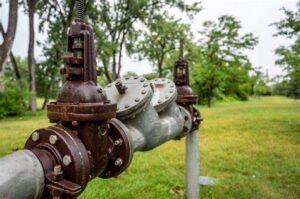5 Tips To Install Backflow Devices In San Diego
Backflow prevention devices are essential components of a plumbing system that ensure clean water remains uncontaminated by preventing the reversal of water flow. Installing these devices correctly is crucial to maintain the safety of your drinking water supply and comply with local regulations. In this article, we will provide you with five essential tips for installing backflow devices to protect your water quality and the health of your community.
Know the Types of Backflow Devices
Before diving into the installation process, it’s crucial to understand the different types of backflow prevention devices available. The most common types are:
- Atmospheric Vacuum Breakers (AVBs)
- Pressure Vacuum Breakers (PVBs)
- Reduced Pressure Zone Assemblies (RPZs)
- Double Check Valve Assemblies (DCVAs)
Each type serves a specific purpose and should be chosen based on your specific needs and local regulations. Research and consult with a professional to determine the most suitable device for your plumbing system.
Comply with Local Regulations
Local plumbing codes and regulations vary from one area to another. It’s essential to research and understand the specific requirements in your locality regarding backflow prevention devices. Some areas may require annual inspections, while others may demand specific types of devices for certain applications. Non-compliance can result in costly fines and potential health risks, so always stay informed about local regulations.
Hire a Qualified Professional
Backflow device installation is a task that should be handled by a licensed and experienced plumbing professional. Hiring a qualified technician ensures that the device is correctly installed, tested, and maintained to meet local standards. A professional will also identify any potential issues or concerns during the installation process, guaranteeing the safety and efficiency of your plumbing system.
Regular Maintenance and Testing
Once the backflow device is installed, it’s not a “set it and forget it” situation. Regular maintenance and testing are essential to ensure the device’s functionality over time. Many local regulations require annual testing and certification to confirm that the backflow device is working correctly. Neglecting this crucial step can result in device failure, putting your water supply at risk of contamination.
Protect the Device from Freezing
In regions with cold winters, it’s imperative to protect backflow prevention devices from freezing temperatures. Freeze damage can lead to costly repairs or replacement. Install the device in an area that is less susceptible to freezing or use insulated covers to shield it from the cold. Regularly inspect the device during the winter months to ensure it remains functional.
FAQs
What Is Backflow, And Why Is It A Concern?
Backflow is the unwanted reversal of water flow in a plumbing system, which can potentially contaminate the clean water supply with pollutants or harmful substances. It’s a concern because it poses health risks and can lead to waterborne diseases if not prevented.
Can I Install A Backflow Device Myself, Or Do I Need A Professional?
While some basic maintenance tasks can be performed by homeowners, the installation of backflow prevention devices should always be carried out by a licensed plumbing professional. Proper installation and regular testing are essential to ensure the device’s effectiveness and compliance with local regulations.
How Can I Find Out About The Specific Backflow Device Requirements In My Area?
To determine the specific requirements for backflow prevention devices in your locality, contact your local water utility or plumbing authority. They can provide you with information on regulations, inspections, and the types of devices suitable for your plumbing system.
Please call Frasers Plumbing at (619) 332-0275 for any and all of your plumbing needs.
Conclusion
Give Fraser Plumbing Inc. a call right away to learn more about how our experts can help with leak detection in San Diego, CA.

